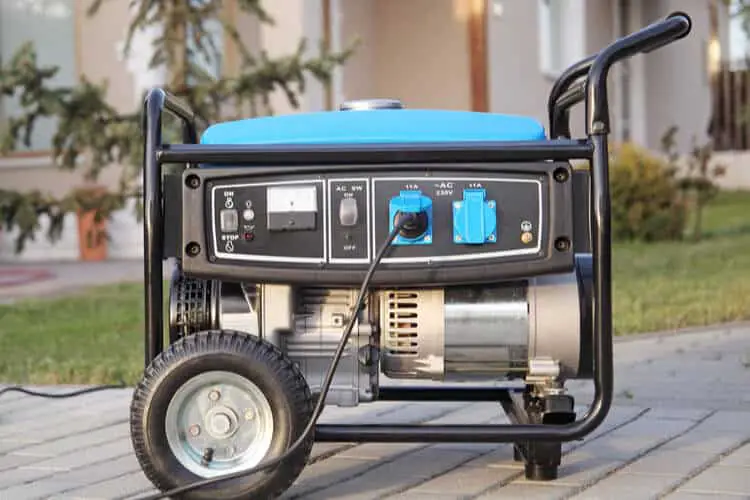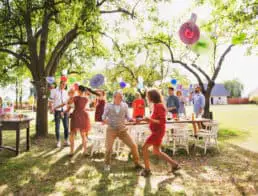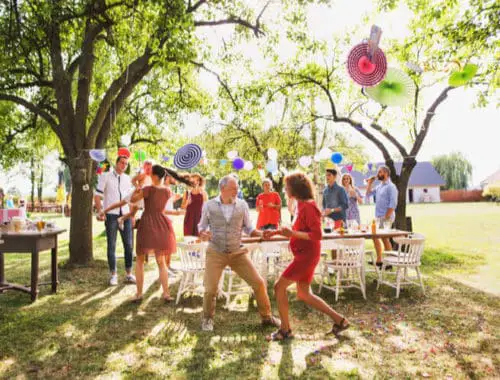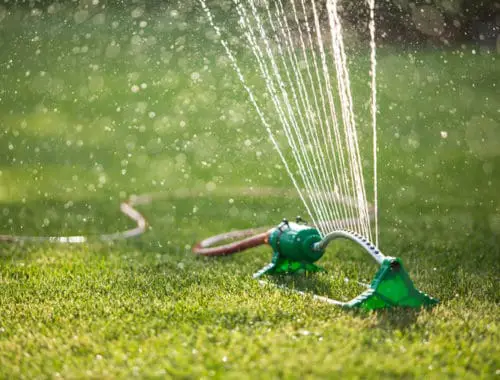Depending on where in the country you live, having a portable generator may make your family more comfortable. You might be at risk of losing power from wildfires, hurricanes, blizzards, or other natural events. Generators can power up fans, space heaters, a refrigerator, lamps, and other appliances that you need to maintain your food supply, keep your home at a tolerable temperature, or simply keep the lights on after the sun sets. Before you use your portable generator, however, it’s important that you know how to use it safely. Read on to learn how to stay safe with your new appliance in case the power goes out.
Place the Generator Outside
The biggest mistake people make when using an emergency generator is using it indoors or too close to a window or door. A generator can create carbon monoxide, which is a potentially deadly gas.1 If it builds up in your house, it can cause headaches, shortness of breath, nausea, and dizziness. If the situation is not remedied right away, it can lead to loss of consciousness and even death. Because the symptoms of carbon monoxide are so vague, it could lead to death before the people being affected even realize that they’re being affected.
To prevent tragedy, it’s important to keep your generator outdoors and away from open windows or doors. It should be at least 15 feet away from any entrance to your home. It’s also important that you place it where it will stay dry. Since you can’t use it in your garage, this may mean not using it if it’s raining. You could also use it in a carport or similar structure, provided it is open on all sides and that the generator can be placed far enough away from the door to your home.
Plug Appliances Into the Generator

Image courtesy of Pixabay
A portable generator cannot be plugged into an outlet to power your entire house; that is something that an electrician can do if you have a larger generator that is meant for whole-house use. The professional will need to install a transfer switch so you can be sure that the power coming into the house from the utility lines is cut before switching on your generator. But that is not something that you will be doing with your portable generator; don’t attempt this, as it would be dangerous for you as well as for any utility workers who might be working on the lines.
When using an emergency generator, you will need to plug the appliances you want to use into the generator. Since you probably will not be using these appliances outdoors and far away from your door, you will need to use extension cords. Use only heavy-duty extension cords that are rated for outdoor use. Check them first to make sure they’re in good, usable shape.
Use the Right Type of Fuel
Many generators are made to use gasoline, so this is what you should have on hand. When fueling up at the gas station, use only an approved gas can and follow the safety rules posted near the pump. Make sure the gas can is on the ground, turn off your car’s engine, and leave space for the fuel to expand as the temperature rises.2
There are also dual-fuel generators. These can use two different types of fuel; usually the two types are gasoline and diesel. Depending on the generator, you might be able to mix the two different kinds of fuel or you might need to use one or the other. Read the instruction manual and be sure you know what type of fuel your generator takes.
When refueling the generator, first turn it off and let it cool down, and be careful not to overfill the tank. Remember that the gas will expand if the temperature goes up; this does not only mean the outdoor temperature but also the generator’s temperature. Don’t spill the fuel, and if you do, be sure to clean it up before turning on the generator.
Check Your Generator Frequently

Image courtesy of Pixabay
With any luck, you won’t need to use your generator often at all. In fact, you might find that it’s a year or two, or even longer, between the times that your electricity goes out and you need to use it to power up your appliances. This doesn’t mean that you shouldn’t use it, however! Fuel and use your generator periodically to ensure that it’s still working. You will also want to be sure that your fuel is fresh; in general, it will last six months or less.3
When you take your generator out to run it, check to be sure there are no cracks, leaks, or other potential safety issues. It’s also best to have a professional check it each year, preferably before your region’s danger season. For example, if your area is prone to summer hurricanes, have it checked in May or June; if you tend to get blizzards that might leave you without power for a few days, November would be a better time to have it checked.
Having a portable generator on hand can give you peace of mind, since you’ll know that you can power up appliances as needed even if the electricity should go out. By following the above tips, you can also know that you are doing everything you can to keep yourself and your family safe in the event that you do need to use it.
Article Sources
Home Life Daily uses only high-quality sources, including peer-reviewed studies, to support the facts within our articles. Read our editorial process to learn more about how we fact-check and keep our content accurate, reliable, and trustworthy.
- Mayo Clinic Staff. Carbon monoxide poisoning. mayoclinic.com. Published 16 Oct 2019. Accessed 1 Nov 2021.
- Regan, Tim. Fire Prevention 52: Gas Cans—A way to transport fuel or little red bombs? nsp.gov. Updated 20 Oct 2016. Accessed 1 Nov 2021.
- Choksey, Jessica Shea. How Long Can Gas Sit in a Car Before it Goes Bad?. jdpower.com. Published 25 Aug 2020. Accessed 1 Nov 2021.










